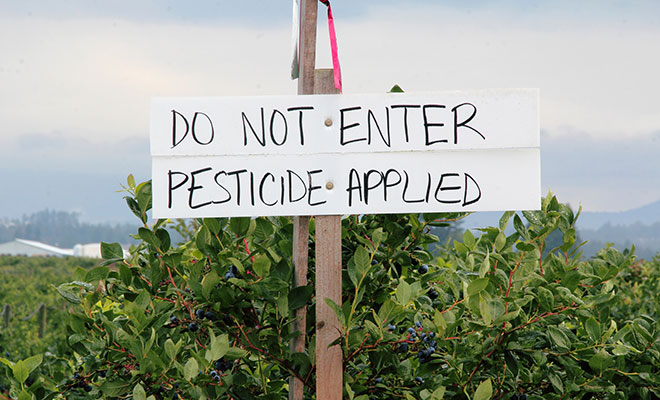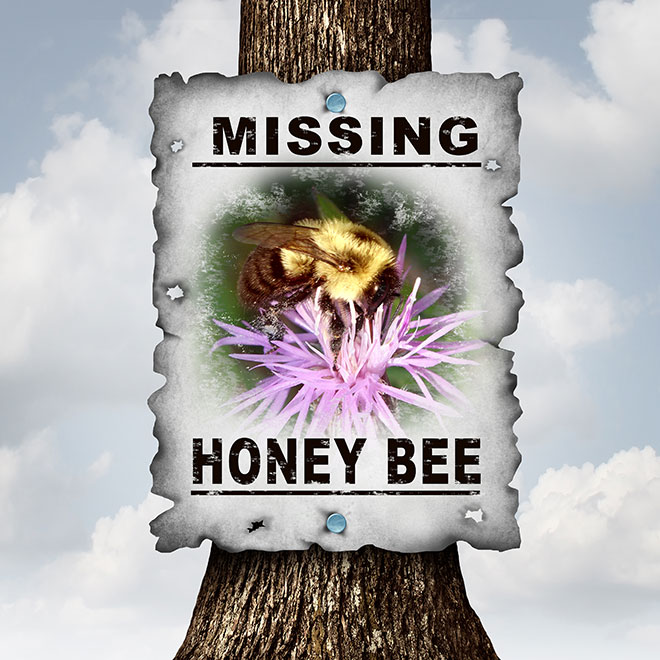Honey bees are disappearing. While trying to stay on top of the recently observed reduction in my garden’s pollinator friends, the honey bees, I ran into a March 2017, Discover Magazine article entitled “Buzzkill” by Steve Volk. (This title alone moved me to read further and faster.)
The author visited an agricultural center in the mountains of northern Utah and reported some alarming observations that dovetail into my recent article.
- Simply stated: Honey bees are disappearing.
- The trouble started 10 years ago.
- Bee colony losses can sometimes reach 50 percent annually.
- Queen bees only survive a third of their normal life span.
- Bees are dying, and the ones that live are weakening.
The article centers on the discussion around agricultural chemicals, including pesticides, fungicides and insect growth regulators, but especially neonicotinoid (neonic) pesticides. Concern has centered around neonics and the impact of combinations of pesticides.With the article’s focus on pesticides and only a vague reference to “chemicals,” there was no mention of herbicides, like glyphosate (GLY). GLY is also not mentioned by any of the beekeepers in the article. This seems a strange omission based on my recent research about some other scientists concerns on the impact of GLY on bee colonies.Regardless, something is breaking down their immune system and making them more susceptible to disease.
A contrary opinion is expressed by Jay Vroom, CEO and spokesman at CropLife America, a trade partnership of seed and pesticide manufacturers, who says that field condition studies measuring the effects of neonics on bees “consistently demonstrate no negative effects.”
How broad these “field condition studies” are raised the question about how all these newer and older chemicals might interact. According to Susan Kegley, a chemist, and CEO of the environmental consulting firm Pesticide Research Institute, “You combine three chemicals and nothing happens, but you introduce them in a different order, you get a big reaction.” It sounds like there are plenty of agricultural chemicals, old and new, whose complex interactions, and potentially negative, have yet to be studied.
In the article “Nicotine Bees” Population Restored With Neonicotinoids Ban, May 2010, author Roberta Cruger notes that pesticides are used to coat plant seeds and are released into the lymph as a permanent insecticide inside the plant. So, after taking a sip of dew from the treated plant’s leaves, many bees simply get lost and die. After banning neonics in Italy (following the lead of France and Germany), the bee population began to recover.(2)
So, it appears we need these neonics to help plants survive the constant insect pest onslaught, right?
Not so fast.

The article also states: “In late 2014, EPA scientists released a study showing that neonic seed treatments produce no significant increase in crop yield. The reason is simple, even predictable: Each year, soil-based pests, targeted by seed treatments, only pop up in about 10 percent of America’s cropland. But instead of dialing back pesticide use, scientists at USDA publicly rejected the EPA’s findings.”
The “bee gone” trouble started in 2007, and pro/con arguments date back to 2010 in other parts of the world, so the U.S. is all over this, right?
“EPA Releases Four Neonicotinoid Risk Assessments for Public Comment” for release: January 12, 2017, the U.S. Environmental Protection Agency has published preliminary pollinator-only risk assessments for the neonicotinoid insecticides… most approved uses do not pose significant risks to bee colonies. However, spray applications to a few crops, such as cucumbers, berries, and cotton, may pose risks to bees that come in direct contact with residue. The 60-day public comment period will begin upon publication in the Federal Register, which will happen soon.(3)
So, seven years after parts of Europe actually banned these chemicals, we are just starting the comment period now? (I might want to comment on that time span alone.)

